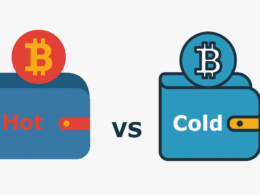With the significant volatility of the crypto market, holding crypto for a long time has shown to be a profitable trading strategy. The process of locking up one’s cryptocurrency holdings in exchange for rewards or interest is known as staking. This can be done by investing in coins that are based on a proof of stake (PoS) blockchain network, which helps PoS networks operate more safely and efficiently. The sole staking requirement is that you keep coins in your cryptocurrency wallet for an extended period of time to earn staking rewards. Staked coins are similar to interest-bearing savings accounts since you earn interest on your initial investment with both options.
This article will assist you in determining which cryptos are the best to stake. We do not provide investment management advice, and anyone who buys the cryptos we recommend is solely responsible for the money they make or lose.
Ethereum

Eth2, or Ethereum 2.0, is the best staking coin currently available. If you wish to stake this cryptocurrency, you’ll need at least 32 ETH to get started. It recently transitioned to proof-of-stake (PoS), with more than $12 billion in ETH invested.
If you don’t have 32 ETH, you can still participate in the Ethereum PoS by joining one of the staking pools with a lower minimum stake. You could also buy tokenized staked ETH like ankrETH, which allows you to use the coin for DeFi without having to withdraw your stake.
Before earning ETH2 rewards, newly staked ETH will go through a bonding period of up to 15 days.
Cardano

Cardano is a “third-generation” blockchain technology that is intended for the creation and execution of smart contracts. The native cryptocurrency, ADA, is a staking token that is designed to reward network security and ease network transactions.
Stake delegation and running a stake pool are two ways to gain staking incentives on Cardano. The Cardano network uses game theory to determine which stake pool will generate the next block on the chain, with the possibility of being chosen as a “slot leader” increasing as the total amount of ADA staked increases.
Some centralized exchanges require tokens to be locked up for a defined period – 30, 60, or 90 days.
Polkadot

Polkadot’s consensus algorithm is nominated proof-of-stake (NPoS). Validators are in charge of validating transactions, whereas nominators guarantee that validators follow the rules.
When a validator acts maliciously, both validators and their nominators lose a percentage of their staked DOT. This is known as slashing.
For nominators, there is no minimum requirement for staked DOT. However, because the network is limited to a total of 22,500 nominators, a minimum of 120 DOT is required to nominate.
Staking awards are accessible for a total of 84 eras, or about 84 days on Polkadot and 21 days on Kusama.
Solana

Solana is a smart contract platform specifically built for deploying decentralized applications. Solana staking rewards can be earned by users as validators or delegated stakers. Validators are in charge of processing transactions and keeping the Solana network up and running, while delegated stakers allocate their tokens to stake pool operators for staking rewards.
Solana differs from other well-known PoS blockchains in that it employs a proof-of-history (PoH) consensus technique for timestamping. By incorporating both PoS and PoH, Solana is able to reach an incredibly fast block time of 400 milliseconds.
Stake tokens can only finish changing state at the start of a new epoch, which lasts around two days.
Tezos

Tezos is an open-source smart contract platform that may be used to generate new digital assets and decentralized applications.
Holders of the native cryptocurrency, XTZ, can swap their tokens for the capacity to validate blocks and earn incentives in a process known as “baking.” Tezos, unlike previous PoS systems, allows users to delegate their XTZ to “bakers,” allowing them to participate in on-chain governance without having to own a minimum of 8,000 tokens.
You have two options when it comes to how long you can stake Tezos. The first choice is a 30-day lock-up period, which provides a reward rate of 6.74 %. Alternatively, you can lock your money in for 60 days and get an 8.52 % return.
Algorand

Algorand uses a Pure PoS system, which increases the efficiency of the protocol. As a result, the Algorand blockchain does not fork and continues to provide immediate transactions.
ALGO, the native cryptocurrency, is regarded as one of the best staking coins because it has few requirements. In fact, unlike Ethereum, only one ALGO token is required to begin staking. This means that there are a lot of staking pools for this asset, but it can be difficult for platforms to offer high APYs.
If you choose the 90-day staking period, you can currently earn about 25% interest. Even if you only wish to lock your assets for a month, you can still earn over 10% interest.
Terra

Terra is a public blockchain protocol that allows anyone to develop their own stablecoins using open-source software.
You can stake LUNA, the native cryptocurrency, as a delegator or as a validator. Delegating LUNA for staking rewards has no requirements and may be done directly in Terra’s native wallet, Terra Station.
Staking as a validator is a little more complicated, as it necessitates the installation of Terra Core software and the operation of a validator node. A validator must be among the top 100 in terms of tokens delegated to be eligible for staking incentives.
The duration of time required is at least 21 days.
PancakeSwap

PancakeSwap is a popular staking platform that allows users to stake any CAKE (the native cryptocurrency) coins they earn.
You first must connect your wallet to the PancakeSwap platform in order to stake CAKE.
You can either claim your rewards or reinvest them into PancakeSwap once you’ve earned them. The CAKE coin’s annual returns ranging from 31% to 42%, making it one of the greatest crypto staking coins available.
The required time is 1 day, 7 days, 30 days, 1 year, and 5 years, and if you remove your tokens during the first three days, you will be charged an unstacking cost.
Summary
Staking your coins on a PoS blockchain network is a great strategy to create large yields and earn passive income. These investments are low-risk and can offer dividends if you take your money out at the right time. In this article, we’ve discussed the best cryptocurrencies to take into account.






